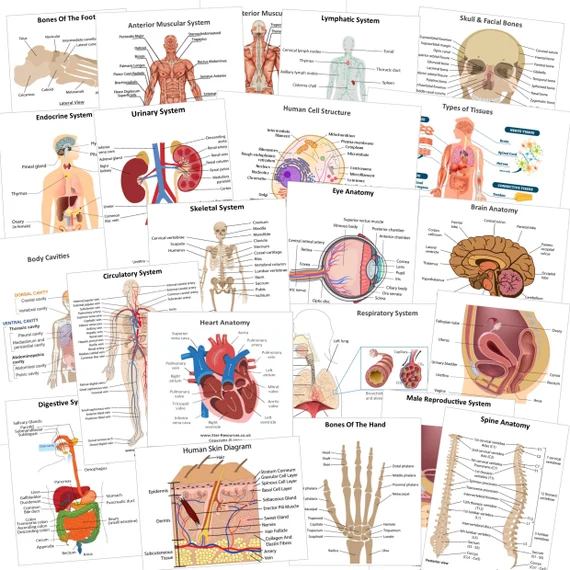Overwhelmed by studying in medical school? Learn how to construct flashcards that stick with the help of templates and strategies that aid with retention.
Introduction: Why Medical Students Struggle with Flashcards
Medical school is a long credentialing process packed with so much information to learn from pharmacology pathways to anatomical terms. Students constantly try to juggle 30,000+ facts on average, yet 58% admitted that their flashcard techniques do not work out. 2023 Journal of Medical Education study put forward numerous common issues, some include,
- Learning without any attention and recall action.
- Attempting to fit excessive information onto a flashcard.
- Lack of attention to important parts.
- Exhaustion due to endlessly studying without taking a break.
But what if I told you that you could manipulate your mind to do more in a less amount of time? Below, we break down 5 research-driven strategies to turn your flashcards from forgettable to unforgettable.
5 Steps to Creating the Best Flashcards
1. Master Active Recall with Spaced Repetition (SRS)
Challenge: The solution is to memorize a certain portion of information and lose 70 % of it over 24 hours (Ebbinghaus Forgetting Curve).
The solution: Your memory losing due to ignoring repetition can take advantage of overusing apps like Anki or Quizlet for spaced repetition automation. These apps present you cards based on the information you are actually likely to forget.
How to optimize Anki:
In order to prevent gapping of information for too much time, set a “Maximum Interval” of 21 days.
- Add tags to each card (e.g., “Cardiology,” “Immunology”) for easier and focused reviews.
- Turn on “FSRS for Anki,” This new algorithm has personalization with 25% greater efficiency.
Case Study: Sarah, a 3rd year student managed to increase her Step 1 score by 15% after switching to Anki’s FSRS algorithm.
Link to Statistical Tools: Watch retention rates through Anki graphs.
2. Visual Aids & Mnemonics: Engage Your Right Brain
The Challenge: Dull, text-heavy cards that are indistinguishable from each other.
The Solution: Use visuals and memory aids to exploit pictorial and associative learning.
Pro Tips:
- Include clinical images (e.g., rashes, x-rays) from sources such as Radiopaedia.
- Construct mnemonics using AI tools like ChatGPT (e.g., use “CUSHINGOID” for the symptoms of Cushing’s syndrome: Central obesity, Upper body fat, Striae, Hypertension).
- Use color to mark borders by system (e.g., red for Hematology, blue for Renal).
Stat: Visual flashcard users recall 42% more information than text users (University of Sydney, 2022).
Link to Qualitative Data: Find out how to get peer reviewed images.
3. Interleave Topics to Crush “STEM Mistakes”
The Challenge: Confusing closely related medications or syndromes (e.g. Crohn’s vs. UC).
The Solution: To blend related topics within your flashcard deck to improve discrimination, use the interleave technique.
Example:
- Card 1: “How is Metoprolol (Beta-1 selective antagonist) metabolized?””
- Card 2: “How is Propranolol (non-selective beta antagonist) metabolized?””
- Card 3: “What is one example of first-line therapy for stable angina?”
Why It Works: Interleaving had been shown to enhance diagnosis accuracy by 33% (Academic Medicine, 2021)
Link to STEM Mistakes: Don’t make these errors in pharmacology and pathology.
4. The “Mini-Case” Format: Think Like a Clinician Class
The Challenge: Learning facts which are not encoded to clinical scenarios.
The Solution: Turn cards into mini clinical cases:
Front: \”64-year-old female smoker with claudication and reduced femoral pulses. What do you suggest the diagnosis is?\”
Back: \”PAD. Next step, ABI test”.
Bonus: Why does it matter? Linked to some policy documents (for example, ACC/AHA PAD referral).
Stat: Case based flash cards increase scores on the NBME Examination by 22% (AAMC, 2023).
5. Schedule Self-Care with Intensive Work
The Challenge: Mental burnout from concentrating on studying.
The Solution: Apply the Pomodoro Technique to flashcards:
- Study for 25 minutes and take a break for 5 minutes.
- Take a longer break (for example, a walk or meditation) after completing four cycles. This break should last 30 minutes.
Link to Self-Care: Protect your mental health with “Study Sprints” helping guide.
Pro Tip: Time your Anki reviews during your energy peaks (for example, do new cards in the morning and reviews in the evening).
World of Achievements: Milo’s Technique of Getting Over 260
According to Mark’s claims, he was successful due to:
- The FSRS algorithm in Anki which makes reviews easier.
- Hybrid cards which contained Sketchy Medical images and segments from First Aid.
- Merging of pharmacology dealing with the heart and kidneys.
- Walking for 20 minutes every day to change focus.
Outcome: Successful match in his most preferred residency program.
Final Thoughts: Your Outstanding Flashcard Tool Is Right Here
Any flashcard that will work needs the right approach and programming, not quantity. SRS, simple images, interleaving, and self-care makes retaining simple with less stress.
Make the Move Now:
- Get your copy of our Med School Flashcard Template (Anki version) for free.
- Attend the webinar: “Top 10 Flashcard Mistakes in Medical Training: How to Avoid Them.”
Check out tips on Time Management for juggling around rotations and studying.


